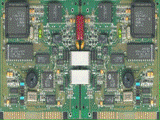Electrical and Computer Engineering, Department of

Department of Electrical and Computer Engineering: Faculty Publications (to 2015)
Document Type
Article
Date of this Version
2003
Abstract
In this paper we present a simulation study of a hybrid routing protocol we proposed in our previous work. Our hybrid routing strategy is called Dynamic Zone Topology Routing protocol (DZTR). This protocol has been designed to provide scalable routing in a Mobile Ad hoc Networking (MANET) environment. DZTR breaks the network into a number of zones by using a GPS. The topology of each zone is maintained proactively and the route to the nodes in other zones are determined reactively. DZTR proposes a number of different strategies to reduce routing overhead in large networks and reduce the single point of failure during data forwarding. In this paper, we propose a number of improvements for DZTR and investigate its performance using simulations. We compare the performance of DZTR against AODV, LAR1 and LPAR. Our results show that DZTR has fewer routing overheads than the other simulated routing protocols and achieves higher levels of scalability as the size and the density of the network is increased.


Comments
Published in the Proceedings of the 7th International Symposium on Digital Signal Processing and Communication Systems (DSPCS’03) and the Proceedings of the 2nd Workshop on the Internet, Telecommunications and Signal Processing (WITSP’03) Coolangatta, Australia (December 2003) (7 p.). Copyright 2003, IEEE. Used by permission.